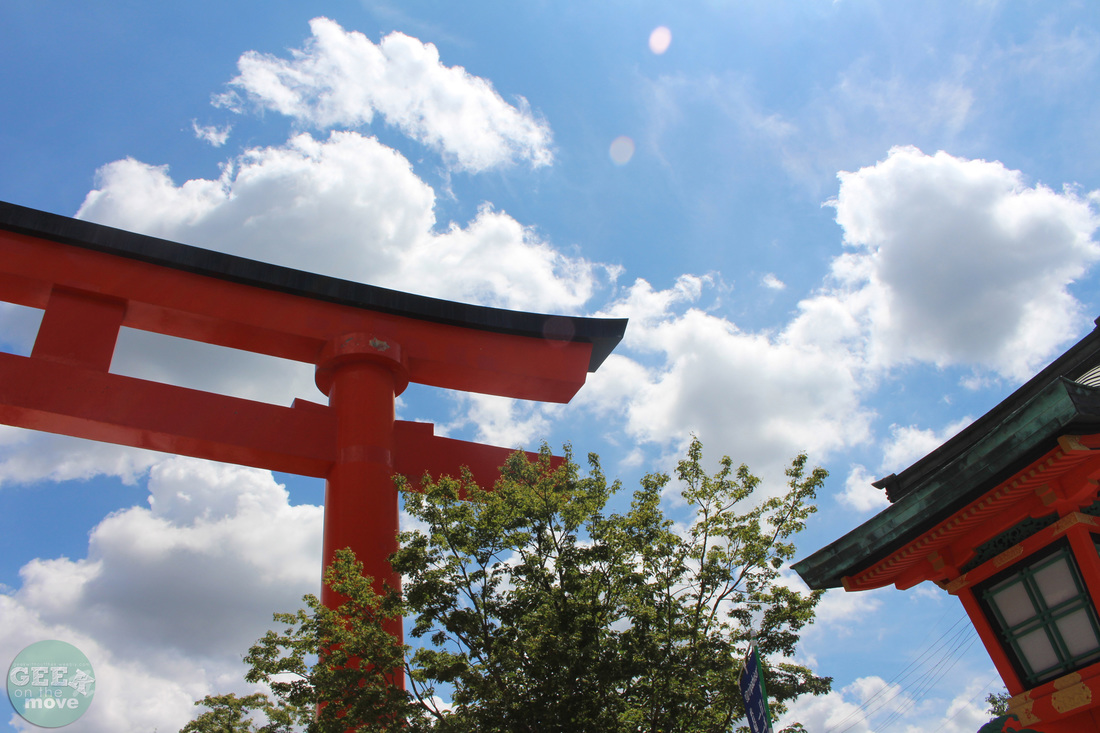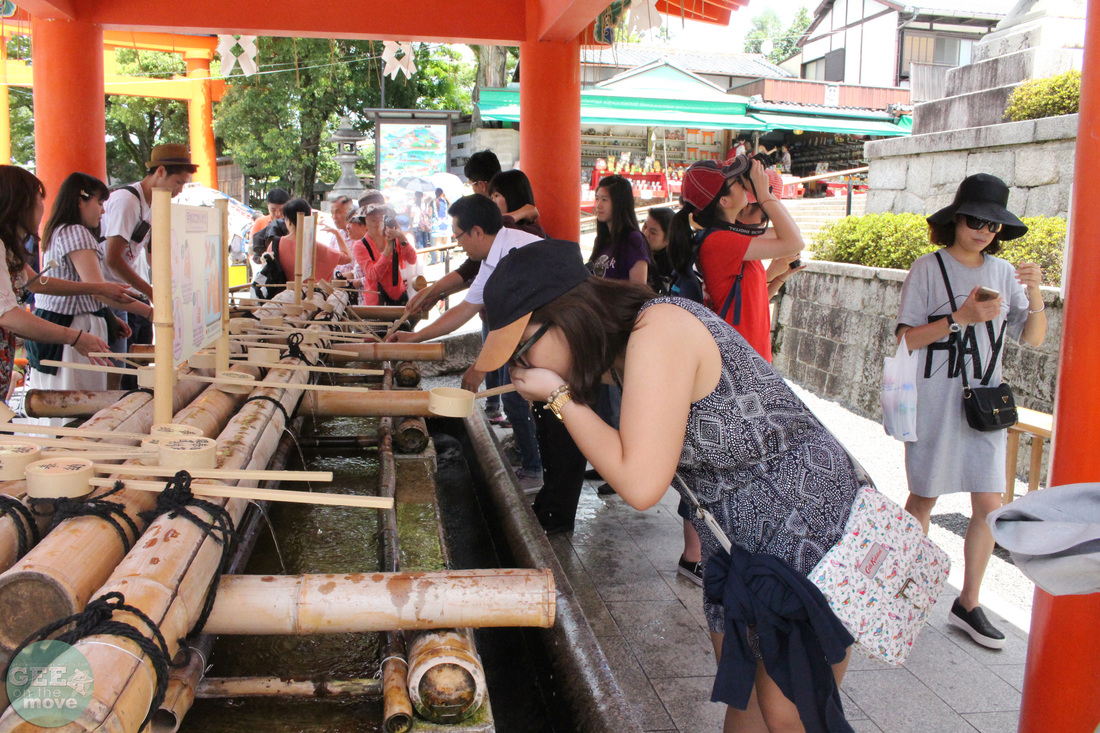What I loved most about Kyoto was how deeply embedded it remains in Japan's rich cultural history. Despite being one of the busiest cities in West Japan, it still maintains its historical charm. You'll find temples and shrines sometimes a stone's throw away from train stations. One of these is FUSHIMI INARI-TAISHA shrine, which is LITERALLY a stone's throw away from the Inari station on the JR Nara line.
Even if you're not familiar with the name, I'm pretty sure you've seen photos of those huge torii gates and their distinctive bright red-orange color. THAT is Fushimi Inari-Taisha Shrine.
Even if you're not familiar with the name, I'm pretty sure you've seen photos of those huge torii gates and their distinctive bright red-orange color. THAT is Fushimi Inari-Taisha Shrine.
Fushimi Inari-Taisha is found in Fushimi-ku in Kyoto. It got its name from Inari, the Shinto god of rice. Tourists flock to the shrine not only because of the torii gates' eye-catching color but also because a short walk further from the main shrine are hundreds upon hundreds of these torii gates arranged densely in a tunnel-like fashion all the way up through the mountain.
These trails lead all the way to an inner shrine, which is around an hour's walk away from the main shrine. You should be warned, though, as some areas can get a bit steep. Going to the inner shrine is not a requirement but it is worth the trip if you have enough time to spare. If you've had your fill of the sights, you can always turn back around and down to the main shrine. No biggie.
If you look more closely at the torii gates, you'll find that there are inscriptions on them. These are the names of the persons or companies who sponsored or donated the torii gate. Prices range from 400,000 JPY up to more than 1M JPY!
Like many other Shinto shrines in Japan, it is customary to "cleanse" yourself before going inside or near the temple. This ritual is called "Harae". That's why you'll see a well-like structure near the entrance of shrines. Here's what you should do during the cleansing ritual:
- Take a cup and fill it with water
- Using your right hand to hold the handle, pour some of the water over your left hand
- Switch it to your left hand and pour some of the water over your right hand
- Shift the handle back to your right hand
- Cup your left hand and pour some of the water into it
- Bring the water to your mouth and rinse. Do NOT drink the water and do NOT touch the cup with your mouth
- If there's water left, tilt the handle so the cup side is on top. Let the water flow through the handle to cleanse it for the next user. Do NOT return the remaining water back to the water source.
VISITING TIPS:
ACCESS:
- BEAT THE CROWDS. Try to be there early in the morning. We left Osaka a bit late that day so we arrived in Kyoto just before lunch time. It was around 11:30 AM when we visited the shrine and it was really crowded! Trust me, it's hard to take cutesy photos with the torii gates if a lot of people are passing by. And because the paths are often narrow, standing there for photos is a bit of an inconvenience for other visitors.
- TAKE A REST. If you are planning to go all the way to the inner shrine, allow yourself enough time for breaks. It can be a long walk to the top of the mountain. Bring your own water bottle if you can as there are few places to get refreshments once on the path to the mountain.
ACCESS:
- From KYOTO Station, take the JR NARA LINE and get off at INARI Station. You'll see first large torii gate, which serves as the main entrance to the shrine, right outside the station.
- Free admission















